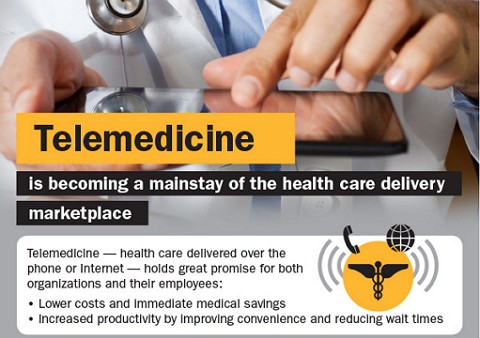Telemedicine could save US companies $6 billion a year in health care costs, according to a survey by Towers Watson.
Writing about workplace telemedicine, Dan Verel of MedCity News says it means that “employees will no longer have to leave the office to go to the doctor for non-emergencies.” Fewer in-person doctor appointments improves productivity and reduces downtime. No wonder corporate leaders view this solution “as a low-cost alternative to emergency room or physician office visits for non-emergency health issues.”
$6 billion is a lot of money, but it won’t appear overnight. Verel quotes Dr. Allan Khoury of Towers Watson as saying, “Achieving this savings requires a shift in patient and physician mindsets, health plan willingness to integrate and reimburse such services, and regulatory support in all states.” To be sure, the healthcare industry needs to educate the public about the advantages of telemedicine, and the laws in many states still need to catch up to the technology.
Telemedicine’s arrival in the workplace “makes sense given the fact that employers are interested in cutting down on unnecessary healthcare costs and fewer physicians will be able to serve a growing number of people entering the healthcare system,” according to MedCity News.
Office telehealth is just one fact of a larger trend toward technology-enabled health consultations. The outlook for telemedicine is upbeat. In fact, revenues from video consultations are expected to hit $13.7 billion by 2017. That’s up from only $100 million in 2013 – truly explosive growth.
What does telemedicine look like in an office setting? It may not be limited to your desktop computer. Several companies are experimenting with different solutions. In the Mayo Clinic’s campus in Austin, TX, employees can step into a private kiosk and have a remote nurse practitioner check their vital signs. Visit this article in the Austin StarTribune to see photos and read more about these innovations.
Graphic courtesy of Towers Watson




